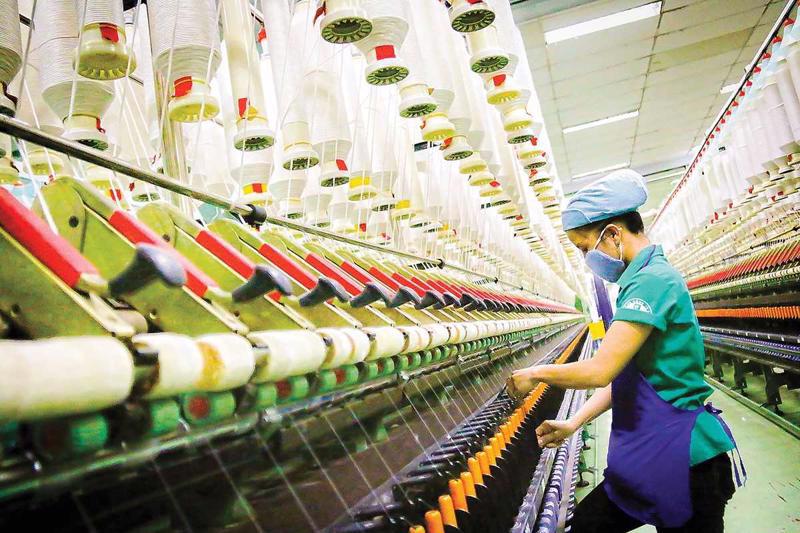As Vietnam aspires to sustain high economic growth amid the global uncertainties, both domestic and international analysts believe the country must urgently tackle two critical bottlenecks: accelerating the disbursement of public investment capital and ensuring energy efficiency to avoid overdependence on electricity consumption. These are seen as foundational moves to unlock momentum and maintain macro-economic stability in the quarters to come.
Urgent action
Recognizing the critical role of transport and logistics infrastructure in driving economic growth, on September 5, 2024, Prime Minister Pham Minh Chinh issued Official Dispatch No. 673/TTg-CN, directing ministries, sectors, and localities to swiftly implement key tasks in a bid to complete 3,000 km of expressways by the end of 2025.
For this year, the State budget plan was to allocate VND87.53 trillion ($3.5 billion) to implement eleven nationally-significant transport projects. Of this, VND74.53 trillion ($2.98 billion) will come from the central budget and VND12.99 trillion ($519.8 million) from local budgets.
According to the Ministry of Finance, as of March 31, total disbursed capital for the eleven projects stood at VND4.81 trillion ($192.5 million), or just 5.5 per cent of allocated funds. Disbursement from the central budget stood at VND3.9503 trillion ($158.01 million), or 5.3 per cent of the plan, while local budget disbursement was VND862.5 billion ($34.5 million), or 6.6 per cent of the plan.
This disbursement rate is quite low, especially when compared to the national average of 9.72 per cent. Figures indicate that the implementation of transport infrastructure projects is lagging behind and requires urgent attention and acceleration.
In response to concerns that recent government restructuring may have contributed to the sluggish disbursement of public investment in early 2025, Deputy Minister of Finance Nguyen Duc Chi said it is important to emphasize that the streamlining of organizational structures is not the cause of the low disbursement rate. “However, during the restructuring process, relevant agencies have had to reassess nearly all public investment projects,” he added. “Some projects had already completed the required procedures and even partially disbursed funds, but if found ineffective under current conditions, they were suspended for re-evaluation. This is one of the reasons for the delay.”
Mr. Le Tien Dung, Deputy Director of the Department of Investment at the Ministry of Finance (MoF), added that public investment disbursement is facing obstacles ranging from institutional frameworks and implementation mechanisms to local financial resources. Specifically, inconsistencies between the Law on Public Investment and the Law on State Budget have caused implementation difficulties. The MoF has submitted proposals for comprehensive amendments to these laws.
At the same time, Decree No. 99 on the final settlement of public investment capital is also undergoing revision, aiming to simplify procedures by shifting from a pre-check to post-check mechanism, enhancing flexibility and delegating greater authority and accountability to project investors.
Mr. Dung also pointed out that many localities that previously relied heavily on land use revenue are now facing significant declines in this income source, leading to a shortage of resources for new project allocations. This is another factor contributing to the underwhelming disbursement performance in early 2025.
Numerous other challenges also persist, including shortages of construction materials and issues related to site clearance and compensation. In response, the MoF has advised the government to establish seven task forces led by Deputy Prime Ministers to address public investment bottlenecks in different regions.
Under this directive, units with slow implementation and no legitimate justification will be subject to accountability reviews. Conversely, localities with strong disbursement performance and capital needs are encouraged to proactively propose additional allocations or the reallocation of funds from areas that are unable to utilize their budgets, thereby improving overall resource efficiency.
Infrastructure and energy gaps
In a recent discussion with the media, Ms. Mariam J. Sherman, World Bank (WB) Country Director for Vietnam, Cambodia, and Laos, said Vietnam has the potential to maintain its positive growth momentum if it effectively leverages the existing fiscal space. However, she also cautioned that it needs to better prepare for increasing uncertainties. “In the upcoming growth strategy, public investment is identified as a key factor, particularly in sectors such as urban infrastructure, transport, and energy,” she continued. “To maximize its role, public investment needs to be expanded in scale, improved in quality, and ensure efficiency in resource use. This is not only a short-term economic stimulus measure but also a foundation for sustainable, long-term growth.”
According to Mr. Nguyen Ba Hung, Principal Country Economist at the Asian Development Bank (ADB) in Vietnam, Vietnam’s infrastructure is better than many countries in the same middle-income group. However, to rise and compete effectively with developed economies in the region, it needs to intensify investments and further improve its infrastructure network, aiming for breakthroughs in quality and efficiency. Rapid and comprehensive reforms are necessary to make this a reality.
Mr. Sacha Dray, a WB economist in Vietnam, said that while the bank assesses Vietnam’s economy as having solid growth prospects in the 2025-2026 period, the existing infrastructure limitations require large-scale, strategic investment solutions. He believes that Vietnam has sufficient fiscal space to allocate resources for critical infrastructure projects, which can create sustainable growth momentum in the medium to long term. However, these investments must be accompanied by effective management to ensure progress, efficiency, and proper prioritization in implementation.
WB experts have particularly emphasized that Vietnam’s electricity consumption / GDP ratio in 2024 rose to the highest level since 2013, reaching 590 kWh per $1,000, surpassing the 579 kWh posted in 2023. The main reason for this is that electricity production and sales have increased more rapidly than GDP growth, with electricity production rising 10 per cent and sales 9.2 per cent. This trend reverses the previous decline in the correlation between electricity consumption and GDP growth during the post-pandemic recovery period of 2022-2023.
The WB forecasts that electricity demand in Vietnam will increase sharply in the years ahead due to the development of electric vehicles and energy-intensive industries such as chip manufacturing and electronics. Therefore, investment in energy infrastructure, especially renewable energy, is urgently needed to achieve the high growth targets in place.









 Google translate
Google translate